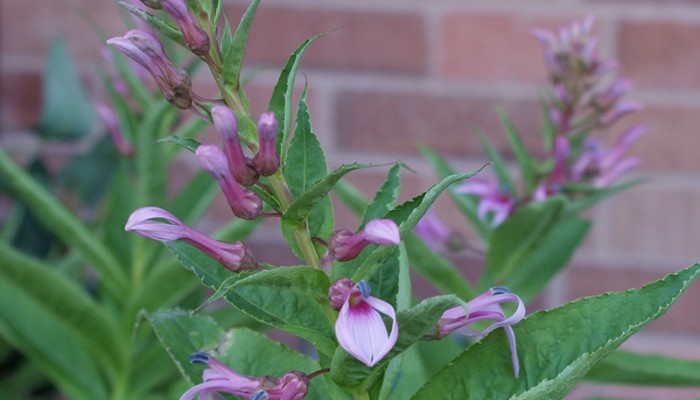The beautiful pink-flowered Lobelia bridgesii is one of five currently recognised species of lobelia native to Chile, four of which are cultivated to varying degrees in the U.K. The name commemorates Englishman Thomas Bridges who arrived in Valparaíso, Chile in 1828 and during the following twenty seven years collected herbarium specimens, plants and seeds, many of which were sent to Kew. Lobelia bridgesii was first collected in about 1833 and named the following year. It was grown in botanic gardens at least in the late 1830’s and 1840’s and figured in Curtis’s Botanical Magazine in 1839. However, it appears it never caught the attention of the gardening public of the era and was lost from cultivation until re-introduced by Thomas Lammers of the Field Museum of Natural History, Chicago from a collection made in 1989.
While it has once more gained a toe-hold in the horticultural landscape of Britain, being cultivated in a number of significant gardens. and with plants being offered by several nurseries and seeds by a few seed-houses, its status is now considered as being vunerable in the wild. It’s range is restricted to an area of 50km radius, principally around the mouth of Bahía de Corral to the south of Valdivia although in recent years the area of distribution is thought to have increased slightly.
Lobelia bridgesii is similar in overall appearance to the more commonly grown Lobelia tupa, but with narrower leaves, a complete lack of pubescence and without any of the red colouration. It is an erect-growing perennial with the angular, winged, light-green, hollow stems typically reaching 0.75 – 1m, and furnished by lanceolate, finely-toothed leaves up to 25cm in length. The stems terminate in racemes of reflexed, soft-pink flowers from June to October. In cultivation it prefers a more freely draining soil than L. tupa, being a good choice for sunny borders, and given the right conditions is likely to be an equally long-lived perennial. The woody crowns benefit the protection of a loose mulch in the early winter. Early growth may get nipped by late frosts but it will go on to provide eye-catching yet subtle colour through summer and up to late autumn.

